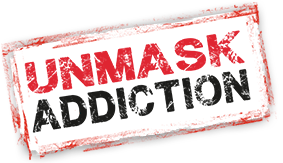Prescription Opioids and Heroin Explained
What is an Opioid?
Opioids are pain relievers made from opium. They come from the poppy plant. Sometimes they are called opiates or narcotics. You might recognize the names morphine and codeine, which are two natural products of opium.
There are also synthetically modified and imitation drugs you may also recognize:
- Dilaudid (hydromorphone)
- Percocet, Percodan, OxyContin (oxycodone)
- Vicodin, Lorcet, Lortab (hydrocodone)
- Demerol (pethidine)
- Methadone
- Duragesic (fentanyl)
- Heroin (street drug)
- Fentanyl
How do people get addicted to opioids?
Many people are first introduced to opioids after an injury, accident or surgery. The pills are legitimately prescribed for pain relief. Abuse and addiction happen when people find that when their actual need is over, the feeling provided by the medication is too hard to break from.
Others are introduced to the drugs in social situations. This is particularly scary as it can take as little as a single dose to rope someone into abuse and addiction. The feeling can be intoxicating.
How are opioids taken?
Most people initially take them orally as prescription pills. As time goes on the dose needs to rise to have the same effect. Many people eventually resort to injecting the medication to get the impact they crave.
How does heroin factor in?
Once a patient prescription runs out, getting pills “on the street” can be very expensive. Many abusers turn to heroin, which can be purchased less expensively but can be just as dangerous.
What is Heroin?
Heroin is an opioid drug made from morphine, a natural substance taken from the seed pod of the various opium poppy plants grown in Southeast and Southwest Asia, Mexico, and Colombia. Heroin can be a white or brown powder, or a black sticky substance known as black tar heroin. Other common names for heroin include big H, horse, hell dust, and smack.
Who is at risk for opioid abuse or addiction?
The truth is that anyone can be at risk. It is a chemical reaction, and it can be nearly instantaneous in some cases. It just takes time to see.
That said, some key groups are at higher risks:
- Women, aged 25-40 who become injured or ill and prescribed medication. Often stressed and time pressed, these women find a release in the medication that is hard to kick.
- Athletes who are prescribed medication for injury and encouraged to play “at all costs.” Teen and college athletes, in particular, can be highly susceptible.
- Students who either try the medication on a dare or seek it out – often in their home medicine cabinet – as a release from the stress of school, work or relationships.
- Seniors, who, living on a fixed income, are turning to street drugs such as heroin, to manage their pain when they cannot afford all of their prescription drugs.
What is the difference between drug abuse, dependency and addiction?
Terms like opioid abuse, drug abuse, drug dependence, and drug addiction are often used interchangeably, but experts define them as follows:
Drug abuse, including opioid abuse, is the deliberate use of a medicine beyond a doctor’s prescription. In the case of opiates, the intention is generally to get high or to relieve anxiety.
Dependence occurs when the body develops tolerance to the drug, meaning higher doses are needed for the same effect. In addition, stopping the drug produces drug withdrawal symptoms.
Drug addiction occurs when the person has drug dependence, but also displays psychological effects. These include compulsive behavior to get the drug; craving for the drug; and continued use despite negative consequences, like legal problems or losing a job
For more information about Heroin, visit the National Institute on Drug Abuse’s website Here

